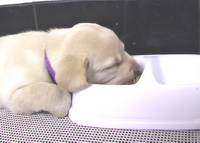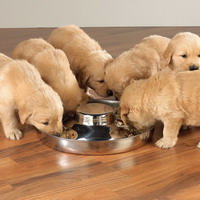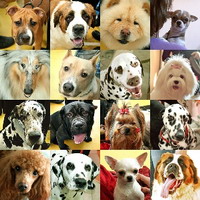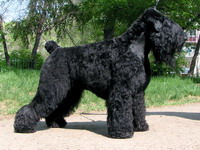The amount of food for dogs and food allergies
 The recommended dry feed rate is usually indicated on the packaging by the manufacturer. Consider that when feeding a dog with a “superpremium” class food, the daily norm is twice as low as when using less expensive “economy” class food.
The recommended dry feed rate is usually indicated on the packaging by the manufacturer. Consider that when feeding a dog with a “superpremium” class food, the daily norm is twice as low as when using less expensive “economy” class food.
With traditional homemade food, the amount of food eaten is governed by the dog’s appetite. The biological mechanism itself, which provides purposeful behavior to meet the body’s need for foodstuffs, should, according to its function, control the optimal nutrition of the animal. However, this regulatory system is very sensitive to all kinds of influences and can be violated, like any physiological mechanism of self-regulation. Domestic pets are so spoiled in their food preferences that they eat only one type of food, the usefulness of which can be questioned. According to scientists, the real causes of food preferences and their changes are not always in the desire to satisfy the vital needs of the body in certain nutrients. Often this is a behavioral problem, aggravated by the erroneous actions of the owners.
Many dog experts believe that the dog should eat up the entire rate without fail, absorbing food quickly, with obvious pleasure and leaving a shiny, almost perfectly clean bowl in a few minutes. Good appetite promote fasting days and active exercise. Do not allow your dog to be fastidious about eating. If she has not eaten the proposed feed, remove it and do not give anything until the next feed. Hunger activates your quivering pet’s appetite. And you, having shown patience, will achieve that the puppy ate the offered food to the last crumb (if, of course, he is not sick).
The need for food is influenced by the following factors: ambient temperature, gender, age, constitution, physiological state, muscular activity and the degree of activity of the dog, as well as features of metabolism. The harder the work done by the dog, the greater the need for energy. For example, a working dog who actively performs his duties during the day and sleeps in a cold kennel at night will need a doubled ration compared to his pet, who dies his age on a soft sofa. In the summer season, the daily energy demand is reduced by an average of 15%. Due to intensive metabolism, males spend relatively more energy than bitches, and young animals – more than adults. A growing body needs 220 calories per day per 1 kg of weight, and a sedentary adult dog needs only 95 calories. Thus, a five-month-old German shepherd puppy weighing 18 kg needs a doubled rate of adult bull terrier of the same weight. Dry, muscular dogs need an increased caloric content of food products to ensure vital processes, rather than loose and fattened animals. Temperament also affects energy requirements (dogs with mild excitability usually consume more calories).
Feed your dog regularly at the same time, observing the frequency of feedings and maintaining breaks between them. So, a puppy at the age of 6 weeks is fed 6 times a day; from 6 weeks to 3 months – 4 times; from 3 to 6 months – 3 times; after 6 months – 2 times. Small puppies are fed for the first time at 6-7 am; the last time is at 22–23 hours. It is desirable that the last feeding consisted of meat that lasts longer in the stomach. A well-fed baby will sleep peacefully and not disturb his master.
Before active work, exhibition, training dogs are not fed, but give only a small amount of high-calorie food. After exercise, they provide rest for an hour, and only then they offer food. Feeding an adult dog twice a day allows the animal to maintain a state of satiety during the day, does not strain or stretch the stomach.
The amount of food for dogs and food allergies The admissibility of a diet is the prerogative of the owners. In many kennels, dogs successfully grow, give birth to puppies and live to a very old age, receiving only dry industrial food. Other owners feed only “natural” food.
For example, the veterinary and pedigree dog owner Kay White suggests using the following daily food ration as the main household food for a large adult dog weighing 30–35 kg: 500 g of boiled meat, 500 g of dry gray bread, cereal or crushed biscuits, 2 tsp bone meal, 2 drops of fresh fish oil.
Douglas B. Oliff, the owner of a kennel for luxurious bullmastiffs, builds their dogs for feeding exclusively on separate meals. The author reports that this approach to nutrition eliminates many problems with the digestive system, in particular, such a terrible life-threatening condition as torsion of the stomach. Veterinarians know that bloating and flatulence often occur due to enhanced enzymatic processes and fermentation caused by the simultaneous consumption of carbohydrate and protein foods.



